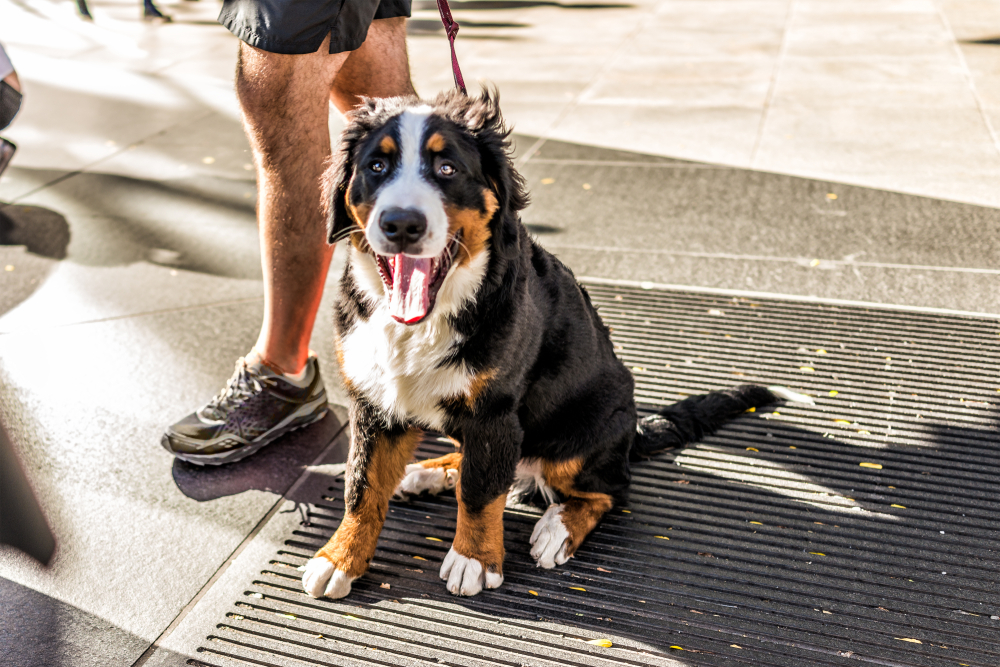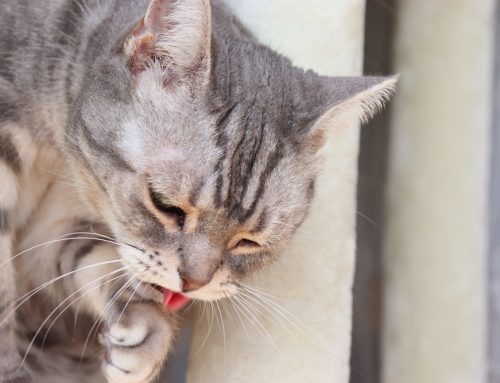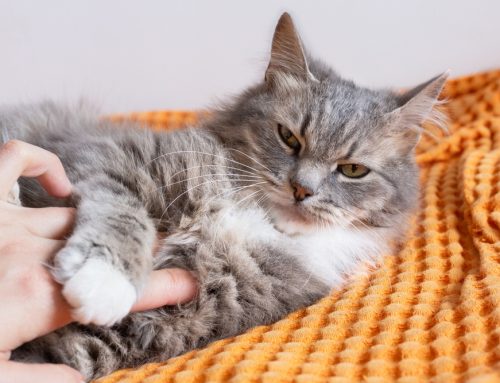Alabama’s hot and humid summers can be dangerous for pets, who cannot regulate their body temperature as well as humans, putting them at higher risk for heatstroke. Our team at Tidmore Veterinary Hospital wants to help by providing tips to safeguard your pet from the heat.
#1: Educate yourself about heatstroke in pets
Heatstroke occurs when your pet’s body temperature rises above the normal range of 101 to 102.5 degrees because of weather conditions or excessive exercise. Pets don’t sweat like humans, and have to rely on less efficient methods, such as panting, to regulate their body temperature, which puts them at higher heatstroke risk. Senior pets, brachycephalic breeds, obese pets, and pets with a chronic medical condition are especially susceptible.
Heatstroke is considered a veterinary emergency, because the high temperatures cause inflammation and damage throughout the body, including the brain, heart, lungs, kidneys, gastrointestinal tract, and coagulation system. Signs include excessive panting and drooling, lethargy, weakness, diarrhea, collapse, and seizures. When affected by heatstroke, a pet’s prognosis depends on how high their temperature rises and how long their temperature remains elevated. Steps to take if your pet overheats include:
- Cool your pet — The faster you can lower your pet’s temperature, the better their prognosis, but you must not bring their temperature down too fast, or they may become shocky. Take your pet to a cool, well-ventilated area, and use wet towels to start bringing down their temperature. Avoid using ice or ice water, which can cause their temperature to drop too quickly.
- Offer your pet water — Heatstroke causes dehydration, and you need to replace your pet’s fluid levels as quickly as possible. Offer your pet water, but don’t force them to drink.
- Monitor your pet’s temperature — Use a rectal thermometer to monitor your pet’s temperature, so you can relay this information to the veterinarian.
- Take your pet to the veterinarian — Your pet will need veterinary care, because internal damage can occur. They may appear to recover once you start the cooling process, but they should still be evaluated to ensure they suffered no damaging consequences.
#2: Ensure your pet is ready for the heat
Bring in your pet for a wellness examination to ensure they are healthy and ready to face the heat. Pets are experts at masking illness, and may not exhibit signs until a medical problem is in the advanced stages. A routine wellness examination includes a thorough physical exam, blood work, including a complete blood count and biochemistry profile, a urinalysis, and a fecal check. These diagnostics can detect serious health issues in the early stages when they are easier to treat and manage. Ensure your pet is as healthy as possible before they face Alabama’s steamy summer months.
#3: Allow your pet to acclimate to the heat
Pets can take one to two months to fully acclimate to the heat and humidity. Help your pet get used to the summer temperatures by first taking them outside for short periods, and gradually increasing the time you spend outdoors together.
#4: Never leave your pet in an unattended vehicle
Every year, numerous pets die after being left in parked cars. Temperatures inside the car can exceed 125 degrees in less than 20 minutes, and parking in the shade or leaving the windows cracked does not keep the temperatures down. Your pet should stay at home if they can’t accompany you when you leave the car.
#5: Leave your pet in the air conditioning
You may want to save money on your electricity bill by turning off your air conditioner when you leave the house, but temperatures inside can become dangerously high on hot, humid days. Draw your curtains and leave your air conditioner running to ensure your pet doesn’t overheat.
#6: Ensure your pet remains well-hydrated
Dehydration increases a pet’s heatstroke risk, but these tips can help ensure your pet remains hydrated.
- Provide several water sources — Provide several water bowls throughout your home, so drinking is convenient for your pet.
- Clean the bowls frequently — Clean the water bowls and provide fresh water at least once a day.
- Provide a water fountain — Some pets drink more if they have access to running water.
- Take portable water — When out with your pet, take water bottles and a bowl, and frequently offer them a drink.
#7: Restrict your pet’s activity
On hot, humid days, restrict your pet’s outdoor activities, and take frequent breaks in shaded areas to allow them time to cool off. Walk during the early morning and evening hours to avoid the hottest time of day, and keep your pet leashed to ensure they don’t get excited and overexercise. If you have a high-risk pet, such as a brachycephalic, obese, or senior pet, or a pet with a health condition, keep them in an air-conditioned area except for extremely brief bathroom breaks.
#8: Protect your pet’s paws

Paved walkways can reach temperatures that can burn your pet’s paws. Ensure you walk your pet in shaded areas, or on unpaved walkways or other surfaces that won’t burn their feet. If you can’t avoid paved areas, shield your pet’s feet with protective booties.
These tips can protect your pet from the heat and humidity. If you would like to schedule a wellness exam, contact our American Animal Hospital Association (AAHA)-accredited team at Tidmore Veterinary Hospital, so we can ensure your pet is summer ready.








Leave A Comment